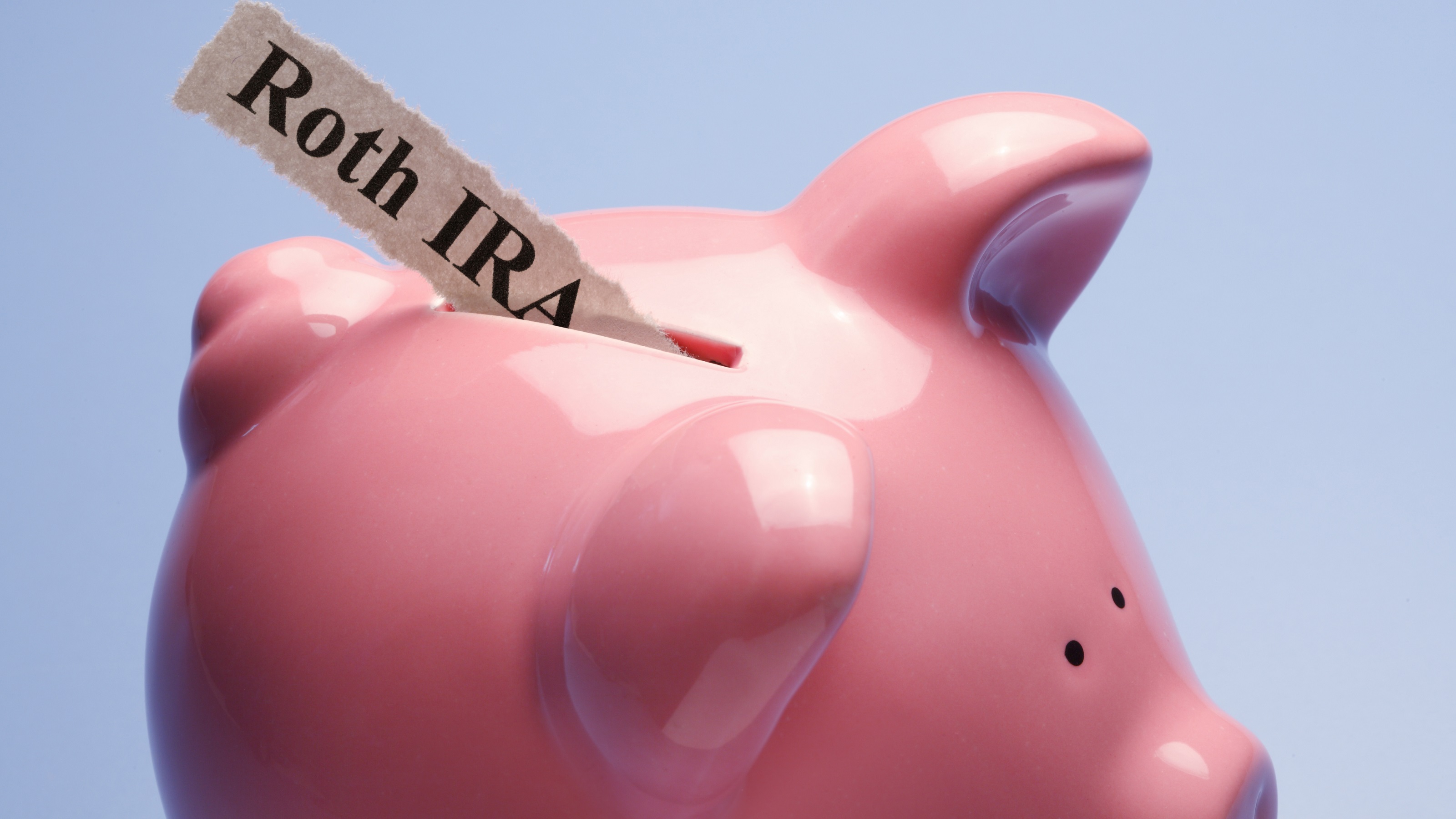Weighing a Roth Conversion? Don’t Overlook These Five Factors
Conversions to Roth IRAs can have wide-ranging consequences on your finances, so look at the big picture before you make your move.


Most investors understand that they need diversification in their portfolios. As a result, they are fairly good about settling on a mix of aggressive, moderate-risk and low-risk investments.
But one area people often fail to account for — especially when saving for retirement — is diversification of the tax status of their assets. Take a look at the retirement accounts of many Americans, and you will likely see they are heavily weighted toward IRA, 401(k), 457 and 403(b) accounts. People rely on that savings for their retirement income, along with Social Security and perhaps a pension.
All of those retirement income sources have something in common, though: They are taxable.
From just $107.88 $24.99 for Kiplinger Personal Finance
Become a smarter, better informed investor. Subscribe from just $107.88 $24.99, plus get up to 4 Special Issues

Sign up for Kiplinger’s Free Newsletters
Profit and prosper with the best of expert advice on investing, taxes, retirement, personal finance and more - straight to your e-mail.
Profit and prosper with the best of expert advice - straight to your e-mail.
Think about that for a moment. We wisely hedge our market risks by diversifying, but we fail to hedge against the notion that based on the Tax Cuts and Jobs Act of 2017, taxes will likely go up sometime in the future and that our tax rate may be higher in retirement than it is today.
Of course, one astute way to mitigate that tax risk is to convert pre-tax dollars to tax-free dollars. And a popular strategy for doing that is to convert a tax-deferred account to a Roth IRA. Unlike with a traditional IRA or other tax-deferred account, you don’t pay taxes when you make a withdrawal from your Roth account because it’s not considered taxable income (provided you follow the Roth IRA distribution rules).
Yes, you do pay taxes when you make the conversion, but that’s at today’s tax rates, not future rates. Also, if you follow the IRS rules regarding distributions, a Roth grows tax-free.
Although a Roth conversion can be an effective tax planning strategy, there are a few things to keep in mind as you weigh whether to take the plunge and decide how much money you should convert in a given year. Those include:
1. Roth conversions and the cost of Medicare Part B premiums
You’ve likely heard that too much of a good thing can be a bad thing. That sometimes applies to a Roth conversion. If you are at an age where you are anticipating signing up for Medicare — or you are already there — you need to be cautious about how much of your retirement savings you convert to a Roth in a given year. This is because the cost of your Medicare Part B premium is determined based on your modified adjusted gross income from two years prior.
The standard monthly premium in 2023 for Medicare Part B is $164.90, which applies to individuals making $97,000 or less and married couples filing jointly making $194,000 or less. As income goes up, so do those monthly premiums. In all, there are six levels of premiums, with the highest being $560.50 a month.
Additionally, you should consider that these numbers may change year to year. For example, in 2024, the Medicare Part B premiums will be $174.70, an increase of $9.80 (this applies to individuals making less than $103,000 or married couples earning less than $206,000). If you are wondering what the highest premium will be in 2024, it is $594, an increase of $33.50!
So, when you look at the net benefit of a Roth conversion, you need to consider all the costs related to the conversion. How much will the conversion raise your taxable income for the year, and will that bump you into a higher Medicare Part B premium over the next two years?
2. How Roth conversions can affect Social Security and taxes
Yes, your Social Security benefits can be taxed. In fact, up to as much as 85% of your Social Security benefit is potentially taxable. Your provisional income is what determines whether and how much of your Social Security is taxed. Provisional income is the total of half of your Social Security benefit, plus your tax-exempt interest, plus the other sources of taxable income that make up your adjusted gross income, including pensions, wages and dividends. If your provisional income is:
- Under $25,000 (for singles) or $32,000 (married couples filing jointly), you pay no federal income taxes on Social Security
- From $25,000-$34,000 (for singles) or $32,000 to $44,000 (married couples), up to 50% of your benefits may be taxable
- Above those income limits, up to 85% of your Social Security benefits may be taxable
So, if you are already drawing Social Security, a Roth conversion could increase your income enough to have an impact. This is one reason why it’s beneficial to begin making those Roth conversions when you are younger, before you are drawing Social Security.
3. Roth contribution limits
The government doesn’t let you put an unlimited amount in a Roth each year and, in some cases, doesn’t let you contribute to a Roth at all. For 2023, the maximum contribution to a Roth IRA is $6,500 annually if you are younger than 50. Those 50 and older can contribute an extra $1,000, for a total of $7,500.
Also, income limits apply. To contribute the maximum, your adjusted gross income can’t exceed $138,000 if you are single, or $218,000 if you are married filing jointly. Beyond that, the amount you can contribute begins to be phased out, and you can’t contribute anything if you are single and your income is $153,000 or more, or married filing jointly with an income of $228,000 or more.
One thing to remember, though, is that while those with high incomes can’t contribute directly to a Roth IRA, there are no income restrictions on Roth conversions.
4. Withdrawal restrictions for Roths
It’s important to know that there are stipulations for accessing the money in your Roth tax-free. You can withdraw the contributions you make to a Roth IRA at any time, whatever your age, without owing taxes or a 10% early-withdrawal penalty. But to withdraw any earnings tax-free and penalty-free, you must be at least 59½, and you must have waited at least five years after opening a new Roth account.
For those making Roth conversions, you must wait five years after the conversion or until you are at least 59½ before you can withdraw the converted amount without paying the 10% penalty. Earnings on conversions are tax-free and penalty-free as long as the owner is 59½ and has had the money in the Roth IRA for at least five years.
Other Roth benefits: RMDs and a tax-free legacy
With tax-deferred accounts, such as traditional IRAs, 457s, 403(b)s or 401(k)s, you must start withdrawing a certain percentage when you reach age 72 (or 73 if you reach age 72 after Dec. 31, 2022), whether you want to or not. This is called a required minimum distribution, or RMD, and it is fully taxable. But there is no RMD for a Roth. You can leave the money untouched as long as you like if other income is taking care of your needs. Also, an additional benefit is that you can pass the Roth account to your family after you die, tax-free.
Clearly, there are plenty of reasons to consider a Roth conversion in your personal plan, but as you can see, how well it will work for you depends on variables such as your income, other assets and your goals. Your financial professional or tax planner can give you guidance on how to responsibly approach a conversion for your specific situation — and get some tax diversification in the process.
Information provided should not be considered as tax advice from GWN Securities, Inc. or its representatives. Please consult with your tax professional.
Ronnie Blair contributed to this article.
The appearances in Kiplinger were obtained through a public relations program. The columnist received assistance from a public relations firm in preparing this piece for submission to Kiplinger.com. Kiplinger was not compensated in any way.
related content
- Benefits of Doing Roth IRA Conversions Early in Retirement
- Roth IRA Conversions: Benefits and Considerations Beyond Taxes
- Considering a Roth IRA Conversion? Six Reasons It Makes Sense
- Are Roth IRAs Really as Great as They’re Cracked Up to Be?
- Are You Ready to ‘Rothify’ Your Retirement?
Profit and prosper with the best of Kiplinger's advice on investing, taxes, retirement, personal finance and much more. Delivered daily. Enter your email in the box and click Sign Me Up.

Daniel Rey is the founder and CEO of Central Florida-based Voyage Retirement Solutions. Daniel developed the Retirement Navigator, a proprietary planning process designed to help Voyage's clientele achieve their long-term financial goals. He is passionate about helping investors, from public pensions and other employee retirement benefit plans to individual retirement planning.
-
 The Rule of Compounding: Why Time Is an Investor's Best Friend
The Rule of Compounding: Why Time Is an Investor's Best FriendDescribed as both a "miracle" and a "wonder," compound interest is simply a function of time.
-
 4 Great Tools to DIY Your Own Financial Plan
4 Great Tools to DIY Your Own Financial PlanSmart Savings Several tools picked out by Kiplinger that DIYers can use to make their own financial plan.
-
 The 7-Month Deadline That Sets Your Lifetime Medicare Premiums
The 7-Month Deadline That Sets Your Lifetime Medicare PremiumsUnderstanding Medicare enrollment is crucial, as missing deadlines can lead to permanent late enrollment penalties and gaps in coverage.
-
 If You're a U.S. Retiree Living in Portugal, Your Tax Plan Needs a Post-NHR Strategy ASAP
If You're a U.S. Retiree Living in Portugal, Your Tax Plan Needs a Post-NHR Strategy ASAPWhen your 10-year Non-Habitual Resident tax break ends, you could see your tax rate soar. Take steps to plan for this change well before the NHR window closes.
-
 Could Target-Date Funds With Built-In Income Guarantees Be the Next Evolution in Retirement Planning?
Could Target-Date Funds With Built-In Income Guarantees Be the Next Evolution in Retirement Planning?With target-date funds falling short on income certainty, retirement plans should integrate guaranteed income solutions. Here is what participants can do.
-
 Your Year-End Tax and Estate Planning Review Just Got Urgent
Your Year-End Tax and Estate Planning Review Just Got UrgentChanging tax rules and falling interest rates mean financial planning is more important than ever as 2025 ends. There's still time to make these five key moves.
-
 What Makes This Business So Successful? We Find Out From the Founder's Kids
What Makes This Business So Successful? We Find Out From the Founder's KidsThe children of Morgan Clayton share how their father's wisdom, life experience and caring nature have turned their family business into a respected powerhouse.
-
 Past Performance Is Not Indicative of Your Financial Adviser's Expertise
Past Performance Is Not Indicative of Your Financial Adviser's ExpertiseMany people find a financial adviser by searching online or asking for referrals from friends or family. This can actually end up costing you big-time.
-
 I'm a Financial Planner: If You're Not Doing Roth Conversions, You Need to Read This
I'm a Financial Planner: If You're Not Doing Roth Conversions, You Need to Read ThisRoth conversions and other Roth strategies can be complex, but don't dismiss these tax planning tools outright. They could really work for you and your heirs.
-
 Could Traditional Retirement Expectations Be Killing Us? A Retirement Psychologist Makes the Case
Could Traditional Retirement Expectations Be Killing Us? A Retirement Psychologist Makes the CaseA retirement psychologist makes the case: A fulfilling retirement begins with a blueprint for living, rather than simply the accumulation of a large nest egg.
-
 I'm a Financial Adviser: This Is How You Can Adapt to Social Security Uncertainty
I'm a Financial Adviser: This Is How You Can Adapt to Social Security UncertaintyRather than letting the unknowns make you anxious, focus on building a flexible income strategy that can adapt to possible future Social Security changes.